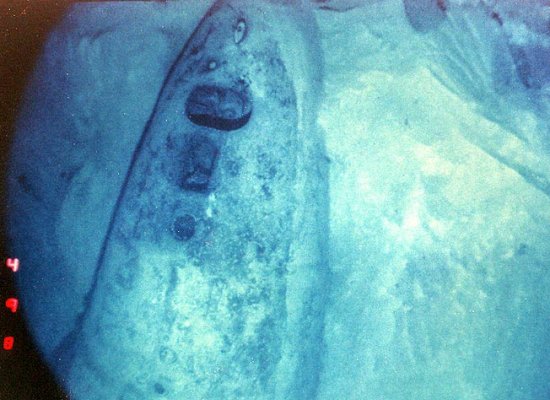About 90 Nuclear Bombs Lost at Sea
The very first bomb that the Allies dropped on Berlin in World War II killed the only elephant in the Berlin Zoo, it is said. The NATO attack on Serbia in 1999 (the Kosovo war) killed more animals than people. "Smart" weapons, such the Tomahawk missile is supposed to hit a postage stamp at 300km or more (200 miles or more). But only two out of thirteen actually hit the target. One skimmed over the house of a small farmer a few kilometres (miles) off target, straight up a track, through bushes, and exploded in the farmer's field, killing seven sheep, one cow and a goat. The farmer kept the missile nosecone as a souvenir.
To err is human. To really mess things up you need a computer
To err is human. To really mess things up you need a computer
On 5 October 1960 an early-warning system warned the North American Aerospace Defence Command (NORAD) of a massive Soviet nuclear missile strike approaching the United States. What happened is that a fault in a computer system had removed two zeros from the radar's ranging components, detecting the missile attack at 4 000km (2,500 miles) away. The radar was actually detecting a reflection from the moon, located 400 000km (250,000 miles) away.

Nuclear bomb - man's worst invention
On 3 June 1980 a massive Soviet missile attack was again registered by computers. 100 nuclear-armed B-52s were immediately put on alert. A computer fault was detected in time, but three days later the same error occurred and again the bombers were put on alert. The problem was later traced to the failure of an integrated circuit in a computer, which was producing random digits representing the number of missiles detected.
On 10 January 1984, Warren Air Force Base in Cheyenne, Wyoming, recorded a message that one of its Minuteman III intercontinental ballistic missiles was about to launch from its silo due to a computer malfunction. To prevent the possible launch, an armoured car was parked on top of the silo.
The history of nuclear weapon accidents is as old as their introduction
The US Department of Defence (DoD) first published a list of nuclear weapon accidents in 1968 which detailed 13 serious nuclear weapon accidents between 1950-1968. An updated list released in 1980 catalogued 32 accidents. At the same time, documents released by the Navy under the Freedom of Information Act cited 381 nuclear weapon incidents between 1965 and 1977.
A number of nuclear cases involve ships or submarines colliding at sea or, in some cases, submarine nuclear power units becoming unstable and the subs having to be abandoned. According to Greenpeace there have been more than 120 submarine accidents since 1956. The most recent incident, in August 2000, was the loss of the Russian nuclear submarine Kursk in the Barents Sea. The Kursk is the seventh nuclear submarine lost, five of them Russian, two American. There are 92 known cases of nuclear bombs lost at sea.
Source : Did You Know












No comments:
Post a Comment